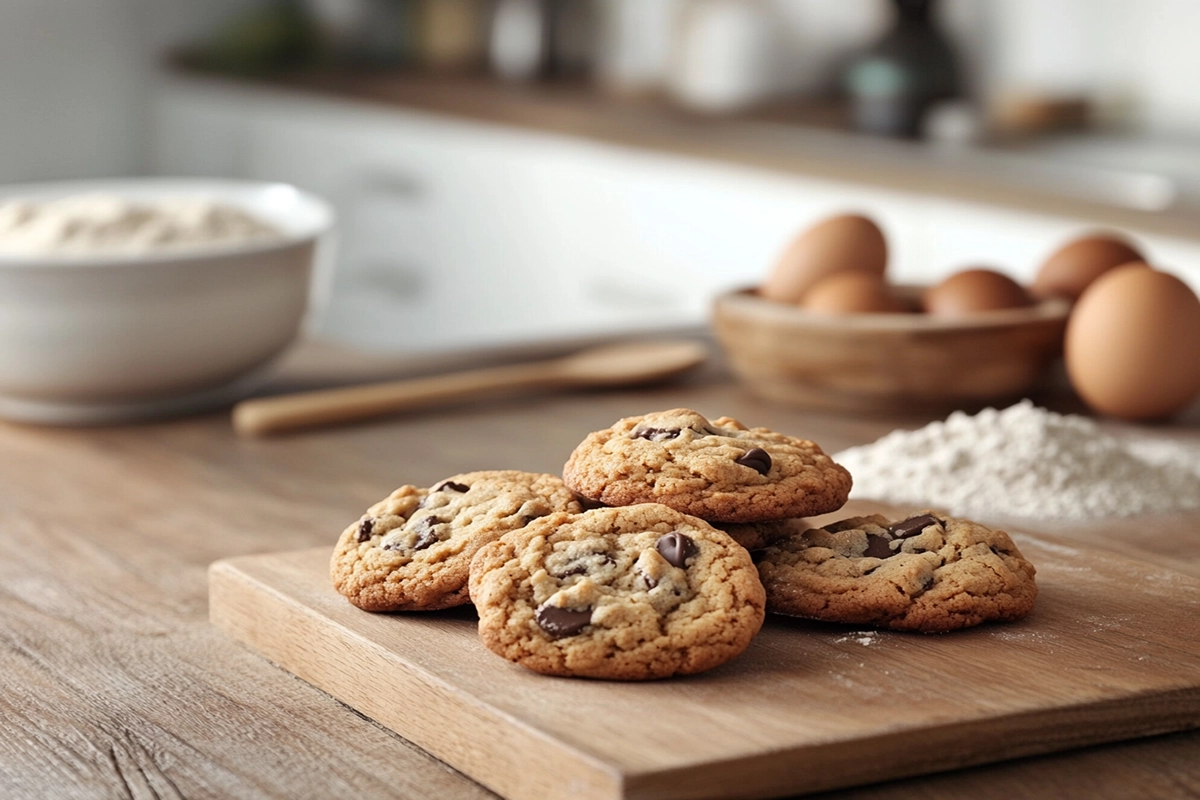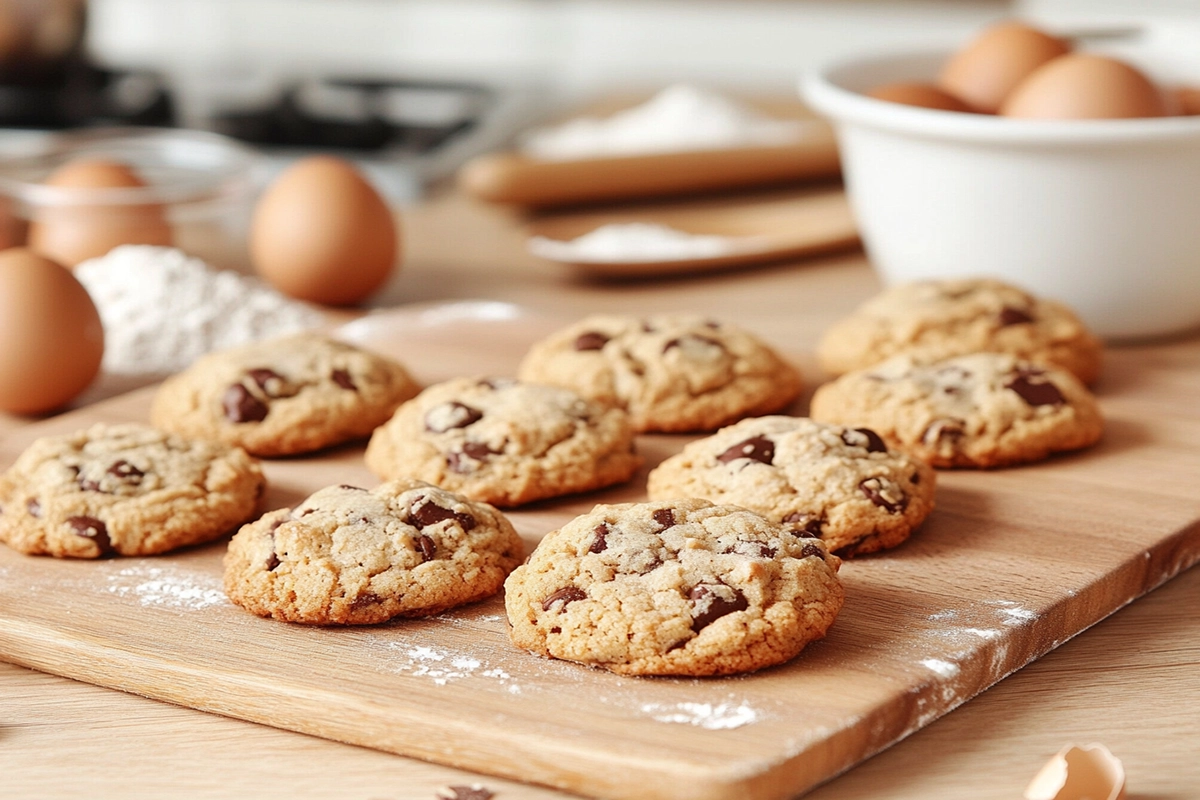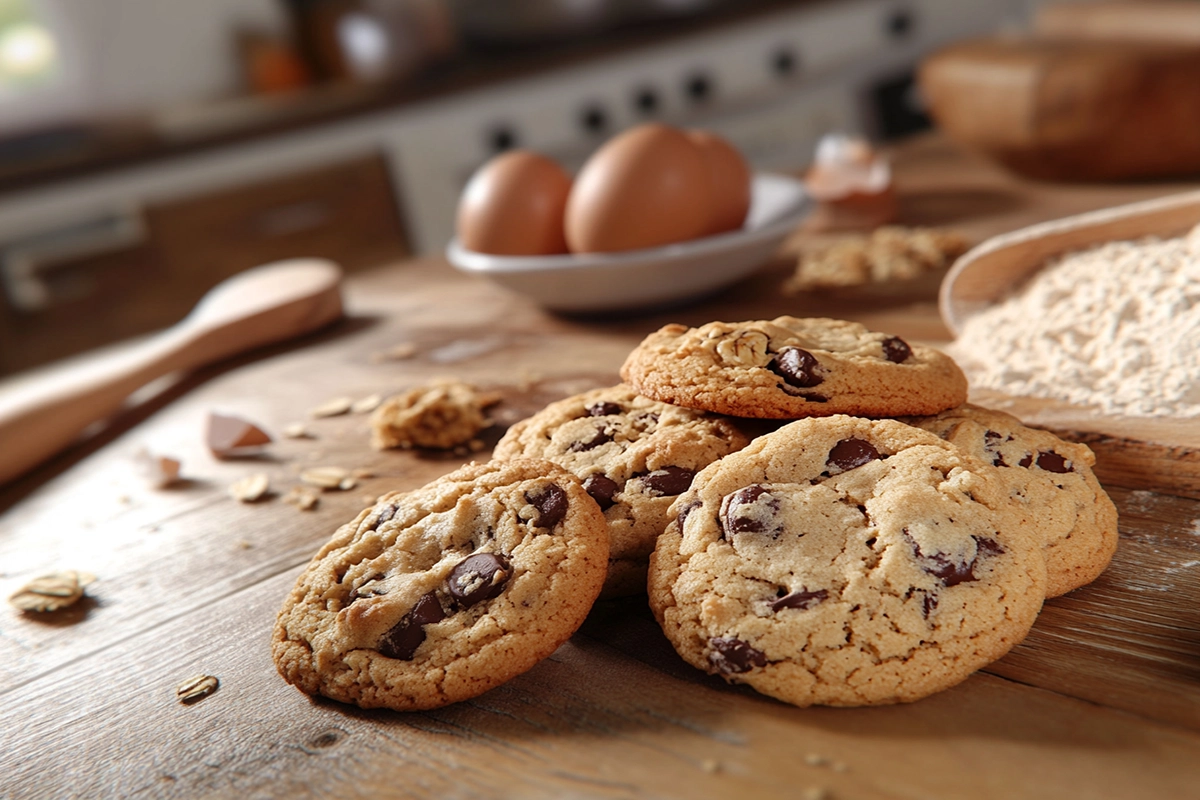Baking is both a science and an art. When it comes to cookies, some people prefer a chewy texture over a crisp one. While store-bought box cookie mixes offer convenience, they don’t always produce that perfect chewy texture. But don’t worry! You can still achieve soft and chewy cookies with a few adjustments to the standard box mix. This guide will walk you through techniques, ingredient modifications, and tips to help you make the perfect chewy cookies. For a different take on cookies, you might want to try these lazy chocolate chip cookie bars, which are easy to make and deliciously chewy.
In this article, we’ll explore how to make box cookies chewy by adjusting ingredients, altering baking techniques, and avoiding common mistakes. Knowing these methods can help you enhance any box cookie mix. If you’re curious about how different baking techniques can affect cookie textures, the difference between cookie and cake batter can provide some useful insights.
Why Is a Chewy Texture Desired?
Many people wonder how to make box cookies chewy because chewy cookies provide a satisfying balance of softness and density. The texture comes from a combination of ingredients, moisture levels, and baking techniques, all of which contribute to making your cookies irresistibly chewy.
Importance of Moisture for Chewy Cookies
Moisture is a key factor that contributes to a chewy texture. Retaining moisture in the dough allows for a softer consistency, giving the cookie its characteristic chewiness. Box cookie mixes are typically formulated to produce balanced results, but adding extra moisture can enhance chewiness. To keep the moisture in, it is essential to store the cookies properly after baking to avoid dryness.
Ingredient Adjustments for Chewiness
Modifying the ingredients is one of the most effective ways to make your box cookies chewier. By focusing on sugars, fats, and other components, you can achieve the desired texture.
1. Use Brown Sugar Instead of White Sugar
- Brown sugar has a higher moisture content than white sugar, helping to retain more moisture in the dough.
- Its molasses content adds a richer flavor and softer texture.
- The darker the brown sugar, the more moisture it can provide to the dough, resulting in a softer and chewier cookie.
2. Add an Extra Egg Yolk
- Including an extra egg yolk adds fat, which contributes to a richer, chewier texture.
- Egg yolks contain natural emulsifiers that help blend the ingredients together smoothly, enhancing the overall moisture of the cookie.
3. Choose Shortening Over Butter
- Shortening has a higher fat content than butter, which results in a softer cookie.
- For the best results, use a combination of butter and shortening to balance flavor and texture. This combination can help create cookies that are chewy in the middle while maintaining a slightly crisp edge.
Fats and Their Impact
The type and amount of fat used in the cookie dough can significantly affect the final texture. Using more fat tends to make the cookies softer, while certain fats can also improve chewiness.
Opt for a Combination of Butter and Shortening
- Butter adds flavor and richness, while shortening provides a chewier consistency.
- Using a blend helps achieve the best of both worlds: flavorful and chewy cookies.
Add a Spoonful of Coconut Oil
- Coconut oil is another fat that can be used to increase the chewiness of cookies. It adds a slight coconut flavor, which can complement certain recipes like chocolate chip cookies.
- Substitute a tablespoon of coconut oil for some of the butter or shortening for a chewier and richer texture.
Adjusting Flour Choices
Flour is the foundation of cookie dough, but choosing the right type can impact the texture. Different types of flour create varying levels of chewiness.
1. Mix All-Purpose Flour with Cake Flour
- Using cake flour reduces the gluten content, resulting in a softer cookie.
- Mixing it with all-purpose flour can help maintain enough structure without making the cookies too dense.
2. Add Cornstarch
- Adding cornstarch can prevent the overdevelopment of gluten, leading to a softer texture.
- It helps give the cookies a delicate chewiness and prevents spreading during baking.
3. Experiment with Bread Flour
- Bread flour has a higher protein content than all-purpose flour, which can help create a chewier texture.
- Replace half of the all-purpose flour with bread flour to add some density and chew to your cookies.
Baking Techniques for Chewy Cookies
Your baking method can make or break your cookies. By following the right techniques, you can ensure a chewy texture.
1. Chill the Dough Before Baking
- Chilling the dough solidifies the fats, slowing their melting during baking and preventing the cookies from spreading too much.
- For best results, chill the dough for at least 30 minutes, but chilling overnight can yield even better results.
2. Underbake Slightly
- Removing cookies from the oven when the edges are set but the center is still soft ensures chewiness.
- Letting the cookies finish cooking on the baking sheet helps retain moisture and gives the center time to firm up without overcooking.
3. Use Parchment Paper or Silicone Baking Mats
- These liners help keep the cookie bottoms from browning too quickly.
- They create a more even baking surface, resulting in cookies that are perfectly chewy from edge to center.
4. Cool on the Baking Sheet
- Letting cookies cool on the baking sheet allows them to continue baking slightly from residual heat, ensuring a soft center.
- This technique also helps prevent over-baking, making it ideal for achieving the perfect chewy texture.
5. Bake at a Lower Temperature
- Baking at a slightly lower temperature, such as 325°F instead of 350°F, can help achieve a chewier texture by allowing the cookies to bake more evenly.
- Lower temperatures help retain more moisture in the cookie dough, resulting in a softer consistency.
Storing Cookies for Maximum Chewiness
Proper storage techniques can preserve the chewy texture of your cookies.
1. Use an Airtight Container
- Store cookies in an airtight container to retain moisture and prevent them from becoming stale.
- For extra softness, add a slice of bread to the container to maintain humidity.
2. Freeze for Longer Storage
- Cookies can be frozen to extend shelf life without losing their chewy texture.
- Wrap each cookie in plastic wrap before placing it in a freezer-safe bag. When ready to eat, thaw the cookies at room temperature.
3. Reheat Before Eating
- To restore the original chewiness, briefly warm the cookies in a microwave or oven before eating.
- This trick is especially useful for cookies stored in the fridge, as it helps to soften them up.
Types of Box Cookies Best Suited for Chewy Texture
Some cookie types lend themselves better to a chewy texture than others. Here are some that work well with the tips above:
1. Chocolate Chip Cookies
- The classic chocolate chip cookie is a perfect candidate for achieving a chewy texture. Adding an extra egg yolk and using brown sugar can enhance the chewiness.
- Consider using chocolate chunks or chopped chocolate bars instead of chips for an extra gooey texture.
2. Peanut Butter Cookies
- Peanut butter’s natural fat content helps retain moisture in the cookies.
- To keep them chewy, avoid over-baking and store them in an airtight container.
3. Oatmeal Cookies
- Oats naturally help retain moisture, making oatmeal cookies an ideal choice for chewy variations.
- Consider using a mix of quick oats and old-fashioned oats for the best texture.
Common Mistakes When Trying to Make Chewy Cookies
Even with the right tips and techniques, there are some common errors that can hinder the desired chewy texture.
1. Overbaking the Cookies
- Baking for too long or at too high a temperature can dry out cookies.
- Always check for doneness before the recommended time is up.
2. Using the Wrong Type of Sugar
- White sugar tends to create a crisper texture, so opt for brown sugar whenever possible.
3. Not Cooling the Dough
- Skipping the chilling step can result in cookies that spread too much and lose their chewiness.
FAQs
Why are my cookies turning out crunchy instead of chewy?
Cookies become crunchy when they’re baked for too long or at too high a temperature. To keep them chewy, reduce the baking time slightly and opt for ingredients like brown sugar and extra egg yolks that help retain moisture. Also, make sure to store them in an airtight container to keep them from drying out.
Can I make chewy cookies using gluten-free flour?
Yes, you can make chewy cookies with gluten-free flour, but consider adding xanthan gum or cornstarch to improve the texture. These additions help to mimic the elasticity of gluten, creating a softer, chewier cookie. Be sure to chill the dough as well, as gluten-free flours tend to spread more during baking.
How long should I chill the cookie dough?
Chill the cookie dough for at least 30 minutes to achieve a chewier texture. For the best results, refrigerate overnight. Chilling helps solidify fats, making the cookies spread less and become softer. This step can make a noticeable difference in the texture.
Should I use parchment paper or greased baking sheets?
It is recommended to use parchment paper because it helps prevent cookies from spreading too much and keeps the bottoms from over-browning. Greased baking sheets can cause cookies to spread more, leading to a thinner texture.
Is it possible to make chewy cookies without brown sugar?
Yes, you can achieve a chewy texture without brown sugar by increasing the moisture content in other ways, such as adding an extra egg yolk or slightly underbaking the cookies. Adding a bit of honey or molasses can also replicate the moisture brown sugar provides.
Conclusion
Making chewy cookies from a box mix is not only achievable but also easy with the right adjustments. By modifying ingredients like brown sugar, egg yolks, and flour types, and using specific baking techniques, you can transform ordinary box cookies into soft, chewy delights. For additional tips on improving your baking, check out this guide on making cookies moist and chewy to understand the techniques behind achieving the perfect texture.
Now that you know the secrets to making chewy cookies, you can enjoy your favorite cookies with a texture that’s just right. Whether you prefer chocolate chip, oatmeal, or peanut butter cookies, the methods outlined above will help you achieve a perfectly chewy result every time.
Enjoy baking, and don’t hesitate to experiment with these techniques to find the perfect balance that suits your taste!



